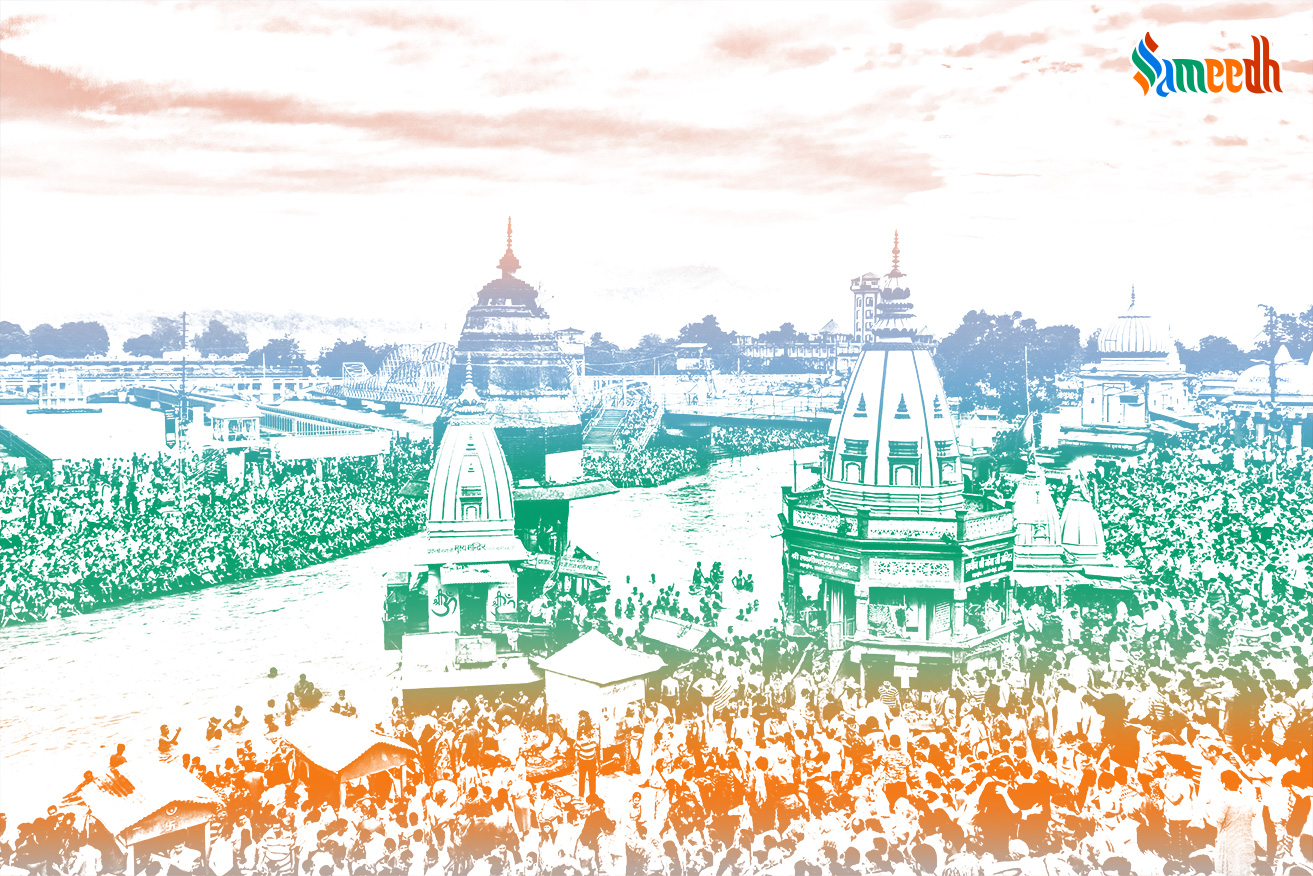Haridwar, literally the Doorway of God, is a ghat city located at the banks of Ganga, in Uttar Pradesh, Northern India. It is a place of immense significance to devotees of Shiva and Vishnu.

LOCATION
Situated in the foothills of the Shivalik at the banks of river Ganga, Haridwar is the second largest city of Uttar Pradesh, a Northern Indian state.
MYTHOLOGY
According to a famous legend, Haridwar is one of the four places where a drop of ‘amrit’ – the elixir of immortality fell. The place where it is said to have fallen on Haridwar is the most sacred ghat of Haridwar known as Har ki Pauri.
Haridwar is said to be the place where Ganga descended from the locks of Lord Shiva’s hair. The river Ganga enters the Gangetic plain at Haridwar, which is why it was originally called Gangadwar.
The mythological Sage Kapil is said to have served penance here, and Haridwar is said to be the entry point of the Chardham Yatra, because of which it holds immense mythological and religious significance especially to the Shaivites and Vaishnavs.
SIGNIFICANCE
According to Hinduism, there are four sites of pilgrimage in Haridwar – Gangadwar, Kushawart, Bilwatirth and Neel Parvat. The Har Ki Pauri – which means The Foot of God, is literally a footprint of Vishnu impressed in stone, is a ghat where devotees go to bathe and wash off their sins. It is said to have been constructed by King Vikramaditya for his brother Bharthari.
The Chandi Devi Temple, on Neel Parvat, is another sacred place for Hindus. It is the place where Goddess Chandi is said to have slaughtered an army of demons. The main statue in the temple was established by Adi Shankracharya.
OVER THE CENTURIES
Haridwar was ruled by the Maurya Empire until 185 BCE followed by the Kushan Empire from the 1st – 3rd Century. In 1206, the Delhi Sultanate took over its rule. Guru Nanak is said to have visited the ghats and bathed there, and a gurudwara has now been built there. Haridwar came under the rule of the Mughals during the 16th Century. Akbar had a copper coin mint here during his rule.
Raja Maan Singh is said to have rebuilt the city and also remade the foundation of Har Ki Pauri, and his ashes are said to have been laid in the Brahmakund at Har ki Pauri.
The Dharam Sangsad, which was a rally of hate speech advocating Muslim Genocide also took place here in 2021.
ARCHAEOLOGY
There was an archaeological dig in Virbhadra, Haridwar, which led to excavations dating back to three cultural phases. The first one led to finding a mud brick wall from the 3rd Century, followed by remains of a temple from the 4th – 5th century. This was followed by burnt brick bats from the 8th century.
DEMOGRAPHY
According to the population census of 2011, Haridwar has a population of 310,562, of which 54% are males and 46% are females. The average literacy rate is 70%.
To know more about such interesting and culturally rich places, and more about our diverse country, read more blogposts from Sameedh